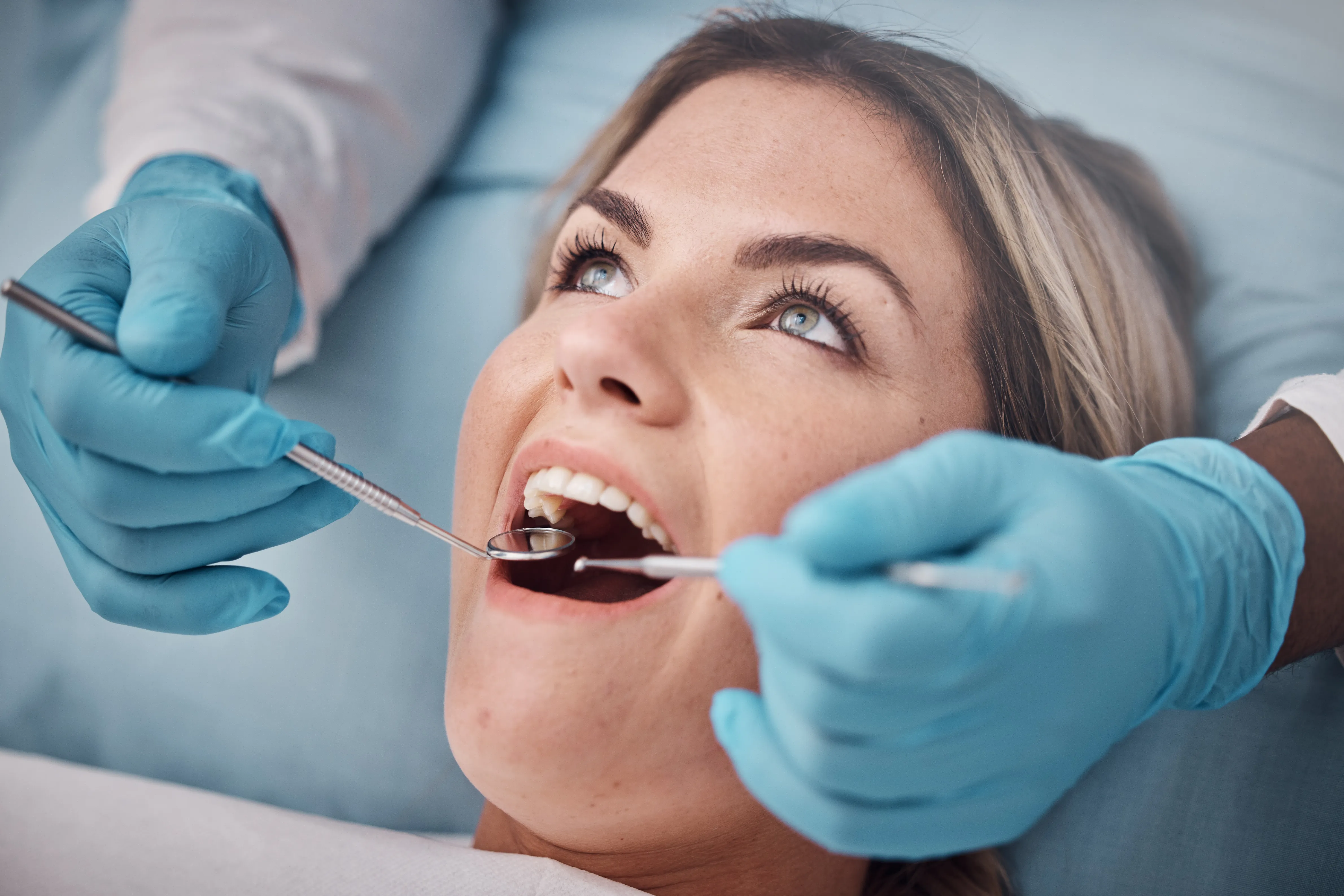Wisdom teeth are extra molars that develop between 17-25. Unfortunately, many patients develop wisdom teeth with an impactful impaction that must be extracted.
An oral surgeon makes an incision to expose both tooth and bone. Once exposed, any loose pieces or individual teeth may be divided or extracted and stitched back into place in their original positions before stitching the area closed again.
Impacted Teeth
An impaction occurs when a wisdom tooth does not fully emerge through your gums or jaw bone. This may lead to infection or cysts which damage nearby teeth as well as surrounding bone, as well as crowding other teeth and creating painful bite issues.
Wisdom tooth extraction is a popular procedure designed to prevent oral complications. For optimal results, wisdom teeth should be extracted when they first emerge so as to facilitate quick recovery times and minimise future risks. When taken early on in life, however, removal risks are reduced significantly and recovery times become significantly quicker and easier, potentially saving on pain later.
After wisdom tooth removal, you may experience mild bruising or swelling that should dissipate within 24 hours. Furthermore, you could encounter unpleasant taste sensations or even some numbness in the lower half of your lips and jaw, all due to an exposed nerve near the wisdom tooth being exposed during extraction. These side effects are normal as there’s likely a nerve nearby which could become exposed during this process.
Follow your dentist’s post-treatment instructions in order to manage symptoms effectively. Drink plenty of water and consume soft foods; avoid hard or cold drinks; brush and floss your teeth regularly in order to keep the area clean; Your doctor may prescribe pain medication to manage discomfort, and you should take it as directed. However, if you experience nausea it’s important to contact your dentist as quickly as possible as this could indicate that the medications are no longer working effectively and could become potentially hazardous. Your dentist might need to switch medication or offer in-office sedation treatments; in severe cases surgery might even be suggested as a last resort option.
Pain
Removal of wisdom teeth usually causes some mild discomfort that is manageable with painkillers. Swelling is also common and should diminish within 2-3 days following surgery – you can reduce this further by applying ice to the area.
Most people don’t require time off work following wisdom tooth extraction as long as they follow some simple recovery tips. To reduce risk of dislodging or irritating the blood clot forming in an empty tooth socket by drinking through a straw, smoking or exercising vigorously; eating soft foods instead and not chewing directly over surgical sites for several days; are all key aspects of recovery from wisdom tooth extraction.
If you experience dull pain in your gum or jaw, or experience bad taste or smell coming from your empty socket, this could be a telltale sign of dry socket. Failure to follow recovery instructions carefully increases the chance of this happening.
Your surgical sites may exhibit hard, sharp protrusions resembling bony walls supporting your extracted teeth; these should gradually smooth over the course of several days or weeks.
Wisdom tooth extraction is a safe, routine dental procedure that can greatly improve your quality of life. If impacted wisdom teeth are causing you problems, speak to your dentist about having them extracted – sooner is better than later! Your dentist will discuss available removal techniques with state-of-the-art sterilization and infection control measures being employed during removal as well as answer any queries about it that arise during or post procedure.
Crowding
Long thought to exert pressure on lower incisors and contribute to their crowding, wisdom teeth were often recommended for removal by orthodontists, general dentists and oral surgeons as a preventative measure.
But recent research disproves this idea. Instead, multiple factors (including tooth size, shape and original placement) play an important part in lower anterior crowding. Furthermore, bone in the lower anterior region naturally resorbs over time leading to increased lower anterior crowding but this has nothing to do with wisdom teeth.
Studies have proven that wisdom teeth extraction reduces the likelihood of future lower anterior crowding; however, this should only be seen as a secondary benefit; its primary goal should be preventing other dental issues like decay, gum disease and pericoronitis.
An effective way to determine if wisdom teeth need extraction is by visiting an oral surgeon or general dentist for a consultation appointment. At this meeting, they can review current and future dental health plans, as well as discuss your bite alignment.
Note that recovering from wisdom tooth removal requires time. Pain, swelling and bruising are often reported after the procedure; and lower incisors may take some time to adjust without the added pressure from wisdom teeth. Therefore, it can often be hard to tell if your bite has altered until recovery has concluded – however if severe discomfort or misalignments arise immediately contact an oral surgeon or dentist immediately for guidance.
Gum Disease
Wisdom teeth that come in at an improper angle and become trapped underneath gum tissue can become trapped under it and form painful cysts or infected and abscessed areas that become difficult to clean, negatively affecting not only surrounding teeth and gums but also their own health.
Brushing and flossing a wisdom tooth can be challenging, leading to the accumulation of plaque that causes serious dental issues. Studies have revealed that non-maintainable areas around wisdom teeth harbor bacteria known to contribute to gum disease in other parts of your mouth – so if gum disease has developed elsewhere in your mouth it could well be your wisdom teeth that are contributing. If that’s the case for you then wisdom tooth extraction could be necessary.
An oral surgeon or dentist can remove wisdom teeth for you, or they may refer you to one who specializes in this procedure. When performing either process, local anaesthetic will be administered to numb the area – which only takes minutes and means no pain will be felt during this treatment process.
Once the tooth has been extracted, the dentist will open up the gum tissue and may need to break up its pieces to make it easier. After extraction, any wounds caused will be stitched closed.
After having your wisdom teeth extracted, it is vitally important that you adhere to your dentist’s instructions. Rinsing with salt water a few times each day will help to reduce bacteria levels in the area; applying clove oil (containing natural antibacterial properties) using cotton swabs or cloth can also soothe pain and ease swelling.
Bacteria
If the wisdom teeth haven’t fully emerged or are impacted, causing an infection to spread throughout your mouth, bacteria may accumulate between them causing gum disease which causes toothache or periodontitis – both signs that it’s time to visit a dentist for treatment.
Infections may arise following wisdom tooth removal. One cause could be neglectful oral hygiene practices that leave food particles and bacteria collecting around the surgical site. Another contributor could be alcohol consumption which destroys good bacteria in your mouth while encouraging bad ones to thrive, leading to infections and ultimately leading to additional surgery procedures.
After wisdom tooth extraction, the best way to prevent infection is to regularly brush and floss all areas surrounding the surgical site with a soft bristled toothbrush, including the surgical site itself. Furthermore, avoid vigorous rinsing or spitting as this could dislodge blood clots that form post surgery and spread infection throughout your socket.
Apart from having your teeth professionally cleaned, you should also schedule regular dental exams with Palms Dentistry. They will help identify any problems with your wisdom teeth and recommend treatments before they become more serious. If you experience pain or swelling in the back of your mouth, contact Cades Clinic now – our friendly team would love to be of service! Serving Simpsonville and South Carolina areas.
Disclaimer: The content on this blog is intended for general informational purposes only. It is not a substitute for professional medical advice, diagnosis, or treatment. Always consult qualified healthcare providers for personalized advice. Information regarding plastic surgery, dental treatment, hair transplant, and other medical procedures is educational and not a guarantee of results. We do not assume liability for actions taken based on blog content. Medical knowledge evolves; verify information and consult professionals. External links do not imply endorsement. By using this blog, you agree to these terms.





